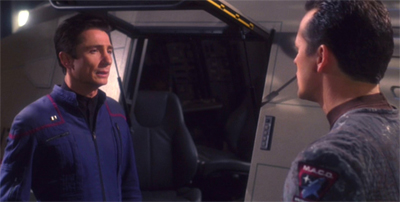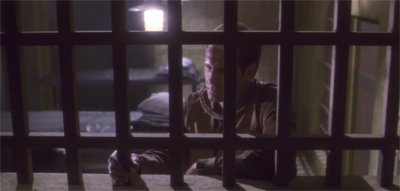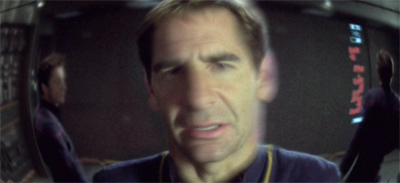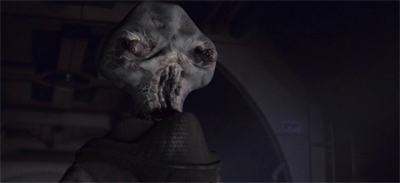Next year, Star Trek is fifty years old. We have some special stuff planned for that, but – in the meantime – we’re reviewing all of Star Trek: Enterprise this year as something of a prequel to that anniversary. This August, we’re doing the third season. Check back daily for the latest review.
Star Trek: Enterprise spent a lot of the final stretch of the third season playing at being Star Trek: Deep Space Nine. There are a number of episodes that provide a direct parallel with stories from that earlier underrated Star Trek show. Damage riffs on In the Pale Moonlight. E² is very much Children of Time. More than that, the moral ambiguity and the long-form storytelling that define the third season of Enterprise also owe a very conscious debt to the work done on Deep Space Nine.
However, the final two episodes of the third season drift away from the ethical uncertainties and moral quagmires that defined a lot of the year’s stories. The Council effective resolved the big thematic questions hanging over the third season, allowing Archer the chance to propose a diplomatic solution to the Xindi crisis. This allows Countdown and Zero Hour to go about the task of providing a suitably impressive action climax to this twenty-four-episode season-long arc. There is precious little soul-searching here; instead, there is one big race against time.
In that respect, the last two episodes of the third season hark back to a more traditional form of Star Trek storytelling. In particular, Countdown and Zero Hour feel like an old-school blockbuster two-parter, in the style of Star Trek: The Next Generation or Star Trek: Voyager. In fact, with Archer’s fate in question and a hostile unstoppable force invading the solar system only to be destroyed in orbit of Earth, Countdown and Zero Hour play like an extended homage to The Best of Both Worlds.
While one of the most frequent criticisms of Enterprise is the sense that the writing staff are simply regurgitating classic Next Generation and Voyager plots, this feels almost earned. The third season has largely been about the show’s journey back to the heart of the Star Trek franchise, a trip that concluded with Archer embracing traditional Star Trek values in The Council. But what fun is that journey if you don’t get to celebrate it with an epic high-stakes world-ending rollercoaster ride?
Filed under: Enterprise | Tagged: adventure, aquatic!xindi, Archer, baddies, countdown, dolim, dune, enterprise, Hayes, MACOs, pulp, reed, science fiction, scott macdonald, star trek: enterprise, Torture, villains, Xindi, zero hour | 12 Comments »



































